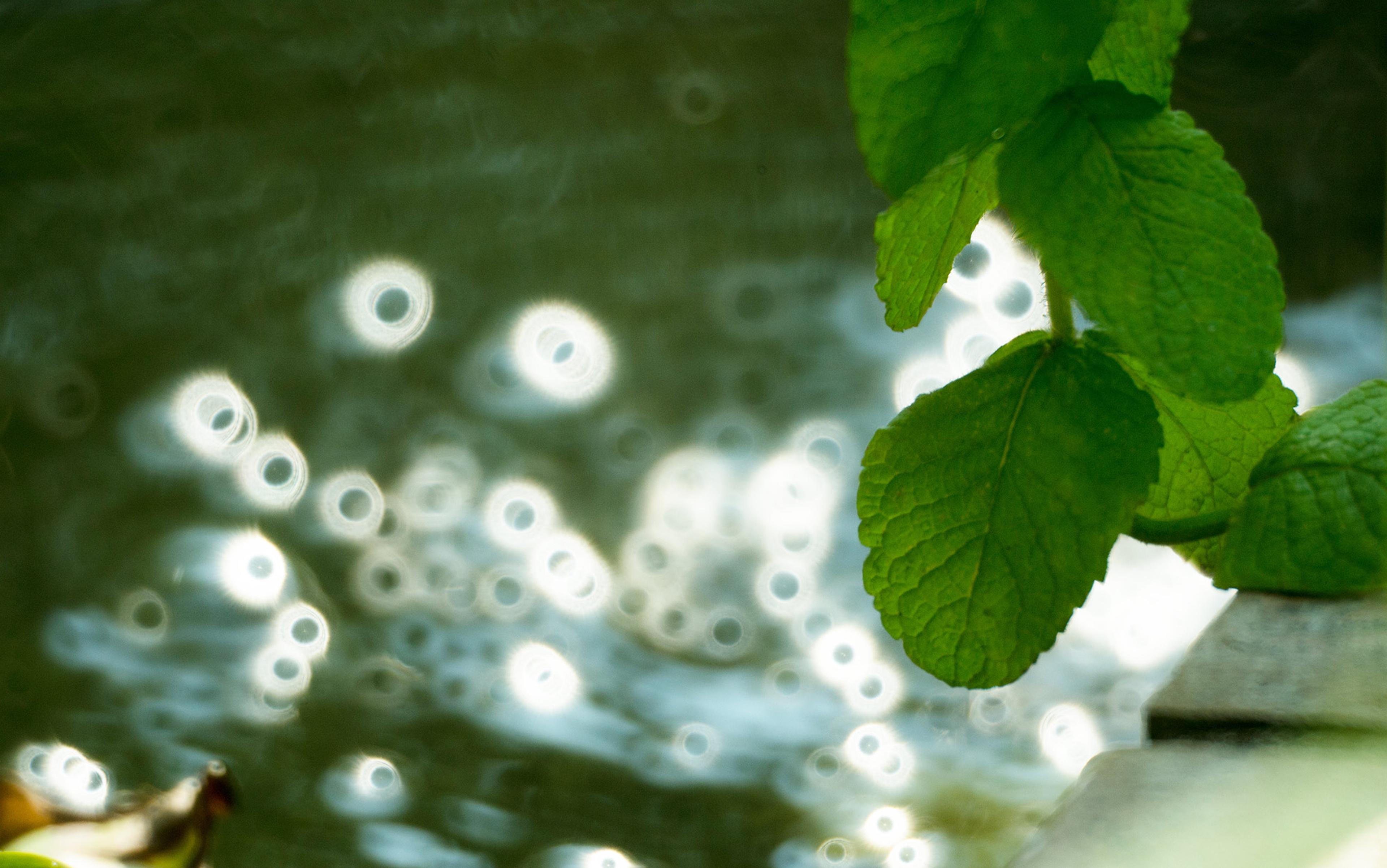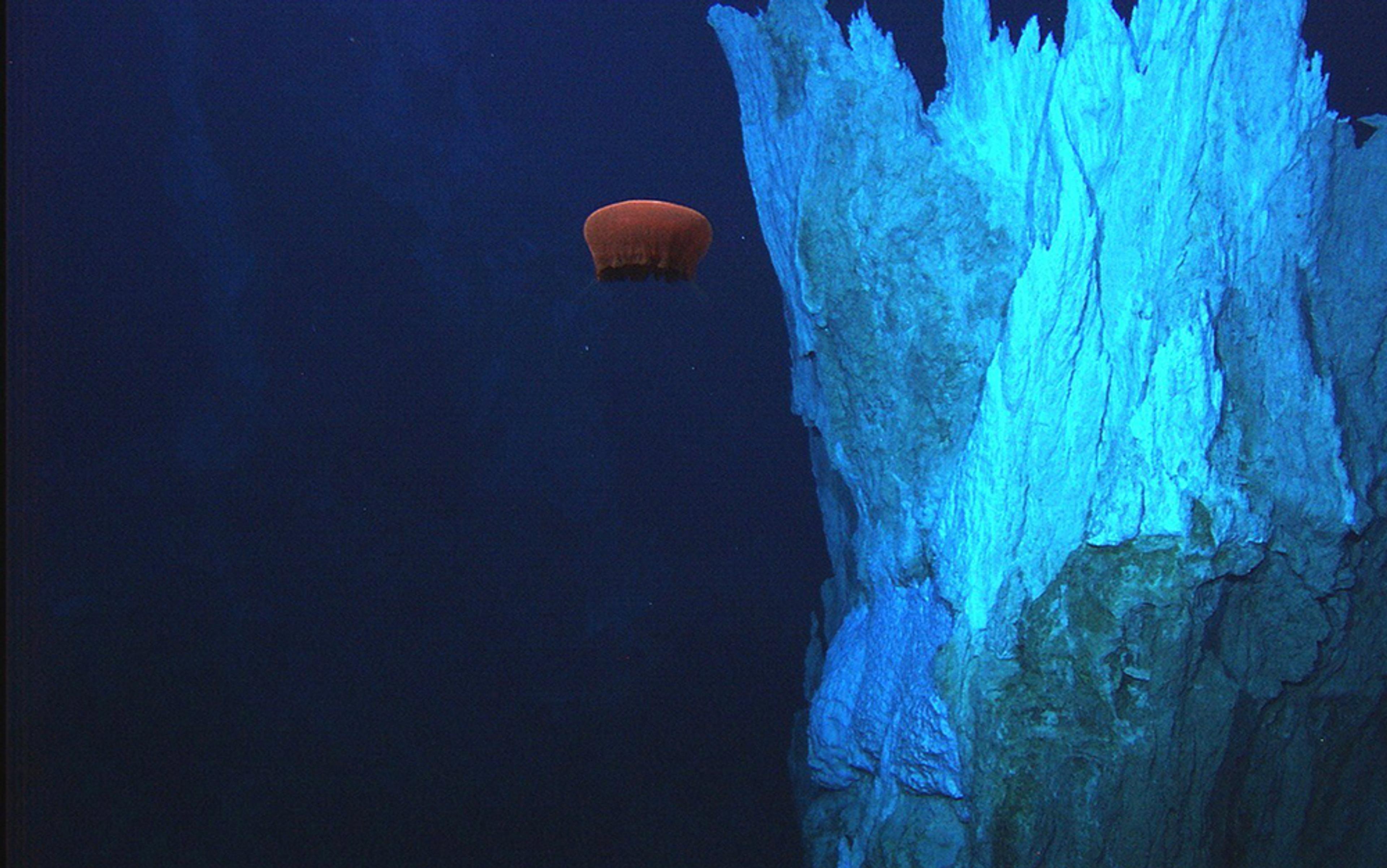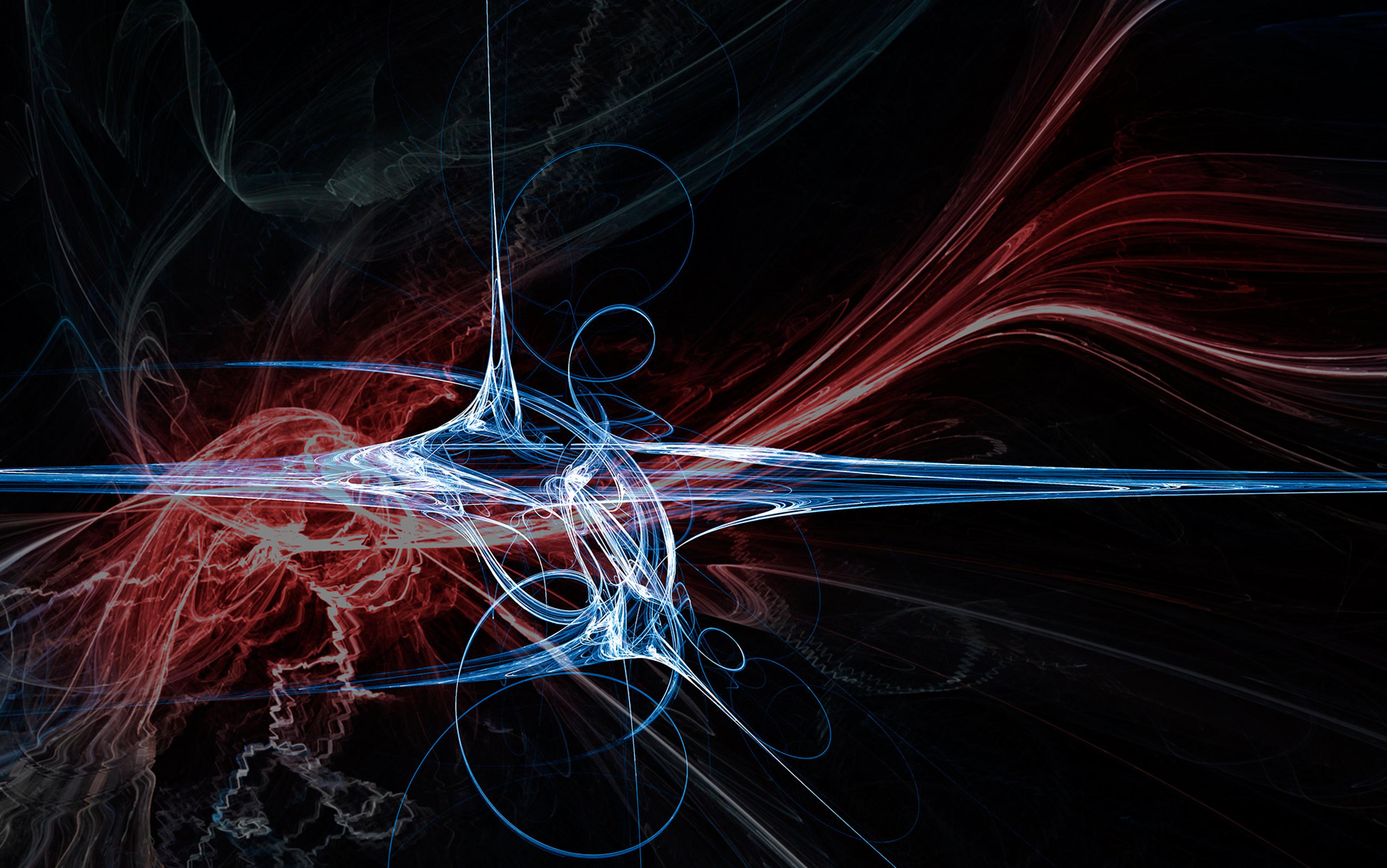The point of the most famous thought-experiment in quantum physics is that the quantum world is different from our familiar one. Imagine, suggested the Austrian physicist Erwin Schrödinger, that we seal a cat inside a box. The cat’s fate is linked to the quantum world through a poison that will be released only if a single radioactive atom decays. Quantum mechanics says that the atom must exist in a peculiar state called ‘superposition’ until it is observed, a state in which it has both decayed and not decayed. Furthermore, because the cat’s survival depends on what the atom does, it would appear that the cat must also exist as a superposition of a live and a dead cat until somebody opens the box and observes it. After all, the cat’s life depends on the state of the atom, and the state of the atom has not yet been decided.
Yet nobody really believes that a cat can be simultaneously dead and alive. There is a profound difference between fundamental particles, such as atoms, which do weird quantum stuff (existing in two states at once, occupying two positions at once, tunnelling through impenetrable barriers etc) and familiar classical objects, such as cats, that apparently do none of these things. Why don’t they? Simply put, because the weird quantum stuff is very fragile.
Quantum mechanics insists that all particles are also waves. But if you want to see strange quantum effects, the waves all have to line up, so that the peaks and troughs coincide. Physicists call this property coherence: it’s rather like musical notes being in tune. If the waves don’t line up, the peaks and troughs cancel each other out, destroying coherence, and you won’t see anything odd. When you’re dealing only with a single particle’s wave, on the other hand, it’s easy to keep it ‘in tune’ – it has to line up only with itself. But lining up the waves of hundreds, millions or trillions of particles is pretty much impossible. And so the weirdness gets cancelled out inside big objects. That’s why there doesn’t seem to be anything very indeterminate about a cat.
Nevertheless, wrote Schrödinger in What Is Life? (1944), some of life’s most fundamental building blocks must, like unobserved radioactive atoms, be quantum entities able to perform counterintuitive tricks. Indeed, he went on to propose that life is different from the inanimate world precisely because it inhabits a borderland between the quantum and classical world: a region we might call the quantum edge.
Schrödinger’s argument was based on the following, seemingly paradoxical fact. Although they seem magnificently orderly, all the classical laws, from Newtonian mechanics to thermodynamics to the laws of electromagnetism, are ultimately based on disorder. Consider a balloon: it is filled with trillions of molecules of air all moving randomly, bumping into one another and the skin of the balloon. Yet, when you add up all their motions and average them out, you get the gas laws, which precisely predict, for example, that the balloon will expand by a given amount when heated. Schrödinger called this kind of law ‘order from disorder’, to reflect the fact that the macroscopic regularity depends on chaos and unpredictability at the level of individual particles.
What does this have to do with life? Well, Schrödinger was particularly interested in the question of heredity. In 1944, a decade before James Watson and Francis Crick, the physical nature of genes was still mysterious. Even so, it was known that they must be passed down the generations with an extraordinary high degree of fidelity: less than one error in a billion. This was a puzzle, because one of the few other known facts about genes was that they were very small – far too small, Schrödinger insisted, for the accuracy of their copying to depend on the order-from-disorder rules of the classical world. He proposed that they must instead involve a ‘more complicated organic molecule’, one in which ‘every atom, and every group of atoms, plays an individual role’.
Schrödinger called these novel structures ‘aperiodic crystals’. He asserted that they must obey quantum rather than classical laws, and further suggested that gene mutations might be caused by quantum jumps within the crystals. He went on to propose that many of life’s characteristics might be based on a novel physical principle. In the inanimate world, as we have seen, macroscopic order commonly arises from molecular disorder: order from disorder. But perhaps, said Schrödinger, the macroscopic order we find in life reflects something else: the uncanny order of the quantum scale. He called this speculative new principle ‘order from order’.
Was he right?
The colour of your eyes, the shape of your nose, your intelligence or propensity for disease are encoded at the quantum level
A decade later, Watson and Crick unveiled the double helix. Genes turned out to be made from a single molecule of DNA, which is a kind of molecular string with nucleotide bases (the genetic letters) strung out like beads. That’s an aperiodic crystal in all but name. And, just as Schrödinger predicted, ‘every group of atoms’ does indeed play ‘an individual role’, with the position of even individual protons – a quantum property – determining each genetic letter. There can be few more prescient predictions in the entire history of science. The colour of your eyes, the shape of your nose, and aspects of your character, intelligence or propensity for disease are encoded at the quantum level.
And yet, the new science of molecular biology that followed Watson and Crick’s discovery remained largely wedded to the concepts of classical physics. This worked pretty well in the latter half of the 20th century, as molecular biologists and biochemists focused on things such as metabolism, which is a product of very large numbers of particles operating under the order-from-disorder principle. But as the attention of 21st‑century biology is now turning to the dynamics of ever-smaller systems – even individual atoms and molecules inside living cells – quantum mechanics is once again making its presence felt. Recent experiments indicate that some of life’s most fundamental processes do indeed depend on weirdness welling up from the quantum undercurrent of reality.
Let’s start with a few relatively peripheral examples – such as the sense of smell. The conventional theory of olfaction is that odour molecules are detected by odour receptors via a kind of lock‑and‑key mechanism inside the nose: the molecule slots into the receptor and triggers a response, like a key turning a lock. It’s a nice, intuitive theory, but it fails to account for certain puzzling observations – for example, the fact that very similarly-shaped molecules often smell different and vice versa. A revised approach suggests that, instead of shape, the receptors might be responding to molecular vibration. This idea received a further quantum twist in 1996, when the biophysicist Luca Turin proposed that vibrations might promote quantum tunnelling of electrons to open the olfactory lock. A quantum theory of smell sounds outlandish, perhaps, but evidence has recently emerged to support it: it was found that fruit flies can distinguish odorants with exactly the same shape but different isotopes of the same elements, something that is hard to explain without quantum mechanics.
Or consider this. Some birds and other animals are known to find their way by detecting the Earth’s very weak magnetic field, yet the mechanism by which they do this has been a long-standing puzzle. The problem is that it is hard to see how such a weak field can generate a signal inside an animal’s body. Further questions emerged in studies involving the European robin: the research revealed that its compass is light-dependent, and that, unlike a conventional compass, it detects the angle of magnetic field lines relative to the Earth’s surface rather than their orientation. No one had any idea why.
Then in the 1970s, the German chemist Klaus Schulten discovered that some chemical reactions produced pairs of particles that remained connected via a peculiar quantum property called entanglement. Entanglement allows distant particles to remain instantaneously connected, no matter how far apart they are: they can be flung to opposite ends of the galaxy and yet remain mysteriously correlated. Entanglement is so weird that Albert Einstein himself, who gave us black holes and warped space-time, dismissed it as ‘spooky action at a distance’. But hundreds of experiments have demonstrated that it is real.
Schulten discovered that entangled pairs of particles can be extraordinarily sensitive to both the strength and the orientation of magnetic fields. He went on to propose that the enigmatic avian compass might be using quantum-entangled particles. Hardly anyone took the idea seriously, but in 2000, Schulten wrote an influential paper with his student, Thorsten Ritz, showing how light could be used to make a quantum-entangled compass in a bird’s eye. In 2004, Ritz teamed up with the celebrated husband-and-wife ornithologists Wolfgang and Roswitha Wiltschko, and together they found compelling experimental evidence that the European robin was indeed using Einstein’s spooky action to find its way around the globe every year.
electrons and protons vanish from one position and rematerialise in another – a kind of teleportation
Navigation and smell are important, no doubt, but perhaps they don’t seem very central to the business of life on Earth. So let’s go after something bigger.
Take enzymes. These are the workhorses of the living world, speeding up chemical reactions so that processes that would otherwise take thousands of years happen inside living cells in seconds. How they achieve this speed-up – often more than a trillion-fold – has long been an enigma. But now, research by Judith Klinman at the University of California, Berkeley and Nigel Scrutton at the University of Manchester (among others) has shown that enzymes can employ a weird quantum trick called tunnelling. Simply put, the enzyme encourages a process whereby electrons and protons vanish from one position in a biochemical and instantly rematerialise in another, without visiting any of the in-between places – a kind of teleportation.
This is pretty fundamental stuff. Enzymes made every single biomolecule in every cell of every living creature on the planet. They are, more than any other component (even DNA, given that some cells get by without it) the essential ingredient of life. And they dip into the quantum world to help keep us alive.
We can up the stakes still further. Photosynthesis is the most important biochemical reaction on the planet. It is responsible for turning light, air, water and a few minerals into grass, trees, grain, and, ultimately, the rest of us who eat either the plants or the plant-eaters. The initiating event is the capture of light energy by chlorophyll molecules. This light energy gets turned into electrical energy, which is then transported to a biochemical factory called the reaction centre, where it is harnessed to fix carbon dioxide and turn it into plant matter. This energy transport process has long fascinated researchers because it can be so efficient – close to 100 per cent. How is it that green leaves can transport energy so much better than our most sophisticated technologies?
Graham Fleming’s laboratory at University of California, Berkeley has been investigating this question for more than a decade, using a technique called femtosecond spectroscopy. Essentially, the team shines very short bursts of laser light at the photosynthetic complex in order to discover the path of the photon as its makes its way to the reaction centre. Back in 2007, the team investigated a bacterial system called the FMO complex, in which the photon energy has to find its way through a cluster of chlorophyll molecules. It was thought to travel as a kind of electrical particle that hopped from one chlorophyll molecule to another, much as Schrödinger’s cat might have hopped from one boulder to another across a stream. But this didn’t make complete sense. Lacking any navigational sense, most photon energy should hop aimlessly in the wrong direction, ending up in the metaphorical water. And yet, inside plants and bacteria that perform photosynthesis, nearly all packets of photon energy reach the reaction centre.
When the team shone the laser at the system, they observed a very peculiar light echo that came in beat-like waves. These ‘quantum beats’ were a sign that, instead of taking a single route through the system, the photon energy was using quantum coherence to travel by all possible routes simultaneously. Imagine if, when confronted by the stream, the famous cat somehow divided itself into lots of identical quantum-coherent cats that hop across the chlorophyll boulders by every available route to find the quickest one. Quantum beats have now been detected in many different photosystems, including those of regular plants such as spinach. It appears that the most important reaction in the biosphere is exploiting the quantum world to put our food on our table.
How does life maintain its molecular order long enough to perform its quantum tricks in warm and wet cells?
And if that’s not enough for you, we come at last to the very mechanisms of evolution itself. Schrödinger suggested that mutations could involve a kind of quantum jump. In their classic DNA paper, Watson and Crick proposed that they might involve nucleotide bases switching between alternative structures, a process called ‘tautomerisation’ thought to involve quantum tunnelling. In 1999, the physicist Jim Al-Khalili and I suggested that proton tunnelling might account for one very peculiar kind of mutation – so-called adaptive mutation – which appears to occur more frequently when it provides an advantage. Our paper was entirely theoretical, but we are currently attempting to find experimental evidence for proton tunnelling in DNA. So, watch this space.
Beneath all these quantum solutions to puzzling vital phenomena, we find ourselves with a deeper mystery. Quantum coherence is an immensely delicate phenomenon, depending on those in-tune particle waves. To maintain it, physicists usually have to enclose their systems within near-perfect vacuums and cool them down to very close to absolute zero temperature to freeze out any heat-driven molecular motion. Molecular vibrations are the mortal enemy of quantum coherence. How, then, does life manage to maintain its molecular order for long enough to perform its quantum tricks in warm and wet cells? That remains a profound riddle. Recent research offers a tantalising hint that, instead of avoiding molecular storms, life embraces them, rather like the captain of a ship who harnesses turbulent gusts and squalls to maintain his ship upright and on-course. As Schrödinger predicted, life navigates a narrow stream between the classical and quantum worlds: the quantum edge.






